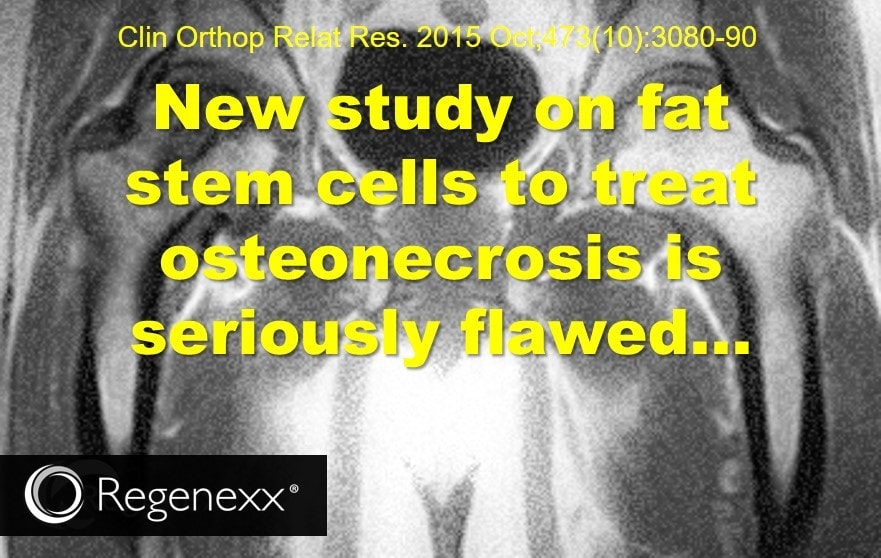Stem Cell Osteonecrosis Study: Circulus in Demonstrando
This morning I’d like to highlight a stem cell osteonecrosis study. Every once in awhile it’s important to highlight research that has conclusions that don’t make sense, or in other words “bad research”. A new study demonstrates a logical fallacy known as “circulus in demonstrando”. In other words, here is a study that seems to show that fat stem cells are better to treat avascular necrosis, but it uses circular reasoning to reach that erroneous conclusion.
Avasuclar necrosis (a.k.a. AVN or Osteonecrosis) is a bad disease where your bone turns to mush or dies off. The treatment is usually surgery, but bone marrow stem cells have been used since the late 90s to help these patients with some success. A relatively new way to treat bone problems is using stem cells isolated from fat, but multiple studies have shown relatively poor performance of these cells in trying to repair orthopedic tissues. However, the title of our “bad study” this morning caught my eye, as it seems to contradict the clear trend of many earlier studies.
The study’s title is provocative: “Adipose-derived Mesenchymal Stem Cells Are Phenotypically Superior for Regeneration in the Setting of Osteonecrosis of the Femoral Head”. First, deciphering the research speak, the title says that fat stem cells are better at repairing bone in osteonecrosis patients than bone marrow stem cells. Wow! Given that this finding contradicts many other studies that show that bone marrow is better in repairing bone, this would be a game changing study. So is it? Nope, regrettably it uses circular reasoning to reach an erroneous conclusion.
So why is this a bad study? The researchers looked at AVN patients who had bone lesions, so in that respect it’s similar to many other studies that have used stem cells to treat this disease. Where this study went wrong is where it got it’s bone marrow stem cells. In this case, a surgeon took this sample from the diseased hip bone that had osteonecrosis and then these cells were studied in a lab. This is a problem, as multiple research studies have shown that these cells have problems, which is why the patient’s bone in this area turned to mush in the first place (i.e. fewer functional stem cells capable of maintaining bone in that area). Other studies showing that bone marrow stem cells help osteonecrosis have taken that sample from healthy bone. The rest of the study that compares the ability of fat stem cells to repair bone lesions to bone marrow stem cells is really not important, as the authors began with diseased stem cells rather than healthy cells.
The upshot? This study title should be, “When we Tested Diseased Bone Marrow Stem Cells vs. Healthy Fat Stem Cells in a Lab, the Fat Stem Cells Performed Better for Treating Osteonecrosis”. Hence, this is a “circulus in demonstrando” logical fallacy or circular reasoning. When the authors chose to use diseased stem cells that caused the bone to turn to mush and compared those in any way to healthy stem cells, the study results went out the window, as no physician with any sense would use diseased stem cells to try to regenerate bone! So in summary, the results of a horse race between one horse that you shoot in the head before the gate opens and a healthy horse aren’t valid!

If you have questions or comments about this blog post, please email us at [email protected]
NOTE: This blog post provides general information to help the reader better understand regenerative medicine, musculoskeletal health, and related subjects. All content provided in this blog, website, or any linked materials, including text, graphics, images, patient profiles, outcomes, and information, are not intended and should not be considered or used as a substitute for medical advice, diagnosis, or treatment. Please always consult with a professional and certified healthcare provider to discuss if a treatment is right for you.
